“My name is Luna, I come from the moon” is how Donyale Luna used to introduce herself. It looks as though the memory of the supermodel’s brief, brimful life had gone back up to the heavens with her for decades. Nailah Jefferson’s insightful and revealing documentary ameliorates this and celebrates an extraordinary woman’s journey. William Klein’s 1966 fashion film Qui êtes-vous, Polly Maggoo?, Federico Fellini’s Satyricon, a Vogue cover and one for Harper’s Bazaar, collaborations with Richard Avedon and David Bailey (interviewed here), images that show her with Salvador Dali and Groucho Marx, relationships with The Rolling Stone’s Brian Jones and Klaus Kinski, Andy Warhol bondings, and and and - it is startling how Luna’s name is not more famous.
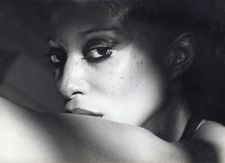 |
| Nailah Jefferson on first encountering Donyale Luna: “The credit for that has to go to the producers of the film, Isoul Harris and Melissa Kramer.” Photo: courtesy of Luigi Cazzaniga/HBO |
There are interviews with Pat Cleveland and Aurora James (seen in Frédéric Tcheng and Bethann Hardison’s Invisible Beauty), and Beverly Johnson, who all admired her, Vogue’s Global Editor-at-Large Hamish Bowles, plus friends and family, including Luna’s daughter Dream Cazzaniga (who was 18 months old when her mother died), husband Luigi Cazzaniga, and her two sisters. Her upbringing took place in a household steeped in domestic violence. While Luna was working as a model in New York, her mother shot and killed her father and Donyale had a nervous breakdown. She went to Europe - London, Paris, Rome - and in poignantly chosen clips and readings from her diaries by her daughter, Jefferson makes clear why knowing Luna’s story is not only of historical significance, but important to forge a better, more diverse and inclusive path for the future.
Donyale Luna: Supermodel traces how Peggy Ann Freeman from Detroit, where, as she remarked, “no one thought I was beautiful,” invented herself with a new name, identity, and accent and for a while seemed to be breaking the colour barrier in the modelling world. Until the backlash came and the rejection from, of all people, the iconic Diana Vreeland.
From New Orleans, Nailah Jefferson joined me on Zoom for an in-depth conversation on Donyale Luna: Supermodel.
Anne-Katrin Titze: Hello! Where are you?
Nailah Jefferson: Hi, I’m in New Orleans. Where are you?
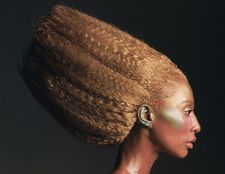 |
| Nailah Jefferson: “She was in Rock and Roll Circus, not only hanging with The Rolling Stones, she was dating one of them.” Photo: courtesy of Luigi Cazzaniga/HBO |
AKT: I’m in New York.
NJ: Oh lovely - your apartment looks beautiful.
AKT: It’s super-hot here today.
NJ: It’s super-hot in New Orleans all the time.
AKT: Congratulations on your film - it really impressed me. Right from the start there’s a snippet with Johnny Carson, a clip from Who are you, Polly Maggoo? I’m not sure if you have Fellini’s Satyricon already then, but there’s the Vogue cover. Most audiences will think: How on earth could I never have heard this name? How can I not know Donyale Luna?
NJ: Yeah, absolutely. We asked ourselves the same question. Once you get into it and you learn all her accomplishments, you’re like: What happened? How could we have lost her? That’s why we have this film and I’m so thrilled that it’s coming out and my hope is that people are really able to celebrate Donyale in a way that she couldn’t be when she was with us in the Sixties and Seventies.
AKT: How did you first encounter her?
NJ: The credit for that has to go to the producers of the film, Isoul Harris and Melissa Kramer. They were working for Uptown magazine back in the early 2000s and they came across her in an art exhibit and did a feature on her. But they also said “We think this needs to be bigger.” For years, I think, they were trying to pitch the film and finally they pitched it to Jeff Friday at the American Black Film Festival and Jonathan Janette Light Box who started a diversity initiative for Black filmmakers in documentary. They loved the story and where like, why don’t we know her, the story needs to be told! I had met Jeff at the American Black Film Festival, I had a film there, and so he brought me onboard. He wanted me to take part and be the director. Growing up I loved models.
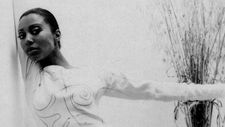 |
| Nailah Jefferson on Donyale Luna: “She was using everything that she learned from Avedon and from Warhol” Photo: courtesy of Luigi Cazzaniga/HBO |
I used to watch E! when they had those fashion shows, I’d get all the magazines. So I was in! I was in just from there. And then when I learned more about her, I was like, she is incredibly fascinating just in the way that she navigated the world. And how she said: I’m going to be this specific person, I’m going to allow you to know this part of me, I want to present in this way and that’s just who I’m going to be. It was very outside of the box. Somebody incredibly fascinating to make a documentary about. So we were able to pitch to HBO and here we are.
AKT: Quite a journey! I also like the journey that structures the film from Detroit to New York to London to Paris to Rome. Plus the moon is always present somewhere. In the part about Detroit we hear that she wanted to be a “typical something.” And then she became somebody so unique and fascinating.
NJ: That’s one of the big themes in this film, how Luna responds and reacts to rejection, right? I think that’s just how we all have to deal with rejection at some point in life. And how do you pivot or what’s your next move? So from very early on she said, okay, I’m experiencing this rejection at home, from my peers, I’m having certain difficulties - what I’m going to do is go inside myself and create a whole other being, so that I can process this world.
Her response wasn’t to lash out. I guess sometimes it can be, but she created something beautiful and imaginative from this. And otherworldly, right? Again it makes you want to lean more into who she was. But I think what you do see is that over time as the rejection continues to occur, there’s only so much someone can take.
 |
| Donyale Luna contact sheet Photo: courtesy of Luigi Cazzaniga/HBO |
AKT: Right.
NJ: I think that’s for everybody. And she just can’t outrun it after a while and it catches up to her.
AKT: Part of the documentary’s structure is her daughter, Dream, reading from the journal which has a Once upon a time fairy-tale feel. I currently teach courses on fairy tales at Hunter College and we just discussed the Grimms’ tale All Fur. It’s about a girl who is under incestuous threat from her father, the king, and she wants dresses to be made for her that resemble the sun, the moon, and the stars.
NJ: Wow!
AKT: Plus a cloak made from fur from all animals in the kingdom to escape. And she does escape. I had to think of this tale in connection to your film - The idea of: I come from the moon. I want to be elsewhere. In your film someone says that her father could get physical. You don’t go into too much detail about the domestic violence. There is a connection, isn’t there?
NJ: Yes, there is a connection. One thing we definitely make clear in the film is that there was domestic violence. Her sister talks about the domestic violence between the mother and the father. She doesn’t say that was extended to the children, but it doesn’t have to be. If you’re in that household and you witness this, you can just imagine what that does to somebody. All of these are things Donyale was trying to escape from, or I should say Peggy Ann [Freeman] was trying to escape from in becoming Donyale Luna.
AKT: Including the accent! That is also fascinating that she invented an accent!
NJ: So fascinating! The fact that her sister said “You’ve never been anywhere to have an accent!” So you also have to wonder, what was she consuming? Her sister said she wanted to be an actress. So the movies she was watching and this and that - how did she land on this accent? And how many years did it take her to refine it? So many questions come up. She’s just so incredibly interesting.
AKT: In the chapter on London, there is this aside, by the way, she was at the time dating Brian Jones of The Rolling Stones and Klaus Kinski, of all people.
NJ: Yeah! Just to put the cherry on top, if you didn’t know she was a supermodel, this is what she was a part of: Andy Warhol, The Rolling Stones, she was in Rock and Roll Circus, not only hanging with The Rolling Stones, she was dating one of them. Then there’s John Lennon she is casually hanging out with, too.
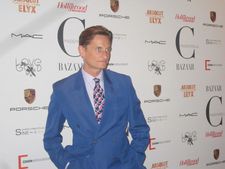 |
| Hamish Bowles speaks of Richard Avedon as “the great gate-keeper of fashion” in Donyale Luna: Supermodel Photo: Anne-Katrin Titze |
To your point, I think a lot of people in the beginning seeing all these images are like, why didn’t we know her? And that’s the question throughout - was she really a supermodel? Was she really iconic? Was she part of the cultural zeitgeist? And when you hear about the company that she kept it’s undeniable, she was right there in the middle of all of it.
AKT: I mean - there she is with Salvador Dali and Groucho Marx!
NJ: Yes, let’s not forget them.
AKT: What almost feels like the navel of the film is the moment concerning Diana Vreeland and I believe it is your voice reading to Beverly Johnson?
NJ: Yes! The conversation that Diana Vreeland and Richard Avedon had about The Great Fur Caravan (the famed 1966 Vogue spread shot in Japan). And anybody who is into fashion knows The Great Fur Caravan. It is iconic, right?
AKT: Of course!
NJ: When we started production I didn’t know this story but as we were filming and researching I came across this story and you just imagine The Great Fur Caravan and you see Veruschka and these iconic pictures and then you hear this story. And oh my gosh, what would Donyale have done with this? What if this had been Donyale? It’s the most expensive shoot in history, all it could have done for her career. What would she have done in the photos? I think Beverly understood that. Nobody could have understood the weight of that - having it at your fingertips and then having it ripped from you. Nobody but a model could really understand this experience.
And who better to ask that the first Black woman to cover American Vogue, who better than Beverly Johnson? So we had this information, we’re going to the interview, preparing. And we’re talking what’s the best way to ask her about this and somebody suggested having her read it. So I’m there in the moment and I ask her to read it, but she doesn’t have her glasses. So I say, okay, I’m going to read it to you. I’m glad we did, because I think her face tells us so much in that moment. She’s going through the emotions as she is processing. So she’s experiencing it and we’re able to see her and then obviously she breaks at the end because it’s just too much.
 |
| Nailah Jefferson on Donyale Luna: “So many questions come up. She’s just so incredibly interesting.” Photo: courtesy of Luigi Cazzaniga/HBO |
AKT: It transmits to the audience.
NJ: At that moment Beverly is every Black model. She’s every model of colour who’s ever felt like they weren’t enough because they didn’t reflect this white standard of beauty that every model is told that they have to fit into. I think we really get Luna’s struggle at that moment and we start to feel for her more than we ever have.
AKT: It’s remarkable also because of the pause and what happens on Beverly’s face. She says something along the lines of “I’m not a crier but it’s the accumulation of all the pain.”
NJ: Yeah, she says it as an ancestor, she gets it. It’s all there with her.
AKT: There’s another interesting moment near the end when father and daughter are walking back to the house and re-visiting the past. It’s close and painful and it’s family. Then he says “Oh, your mother was vegetarian mostly.” And Dream [Cazzaniga, Donyale’s daughter] says “Really?” It’s something new that she learned because of the film, because you put them there.
NJ: The thing about filmmaking is that you ask people to come and give so much of themselves. You’re so grateful to people like Beverly and Dream and Luigi [Cazzaniga, Dream’s father and Donyale’s husband], who really do this, because it is still so sensitive. I don’t think anyone got to give Luna a proper goodbye. She was taken away so suddenly and Dream was just a baby.
Luigi was heartbroken and even all the friends whom we talked to - at the moment when we’re talking about her death, that’s the first time a lot of them have ever really been able to speak about it. I’m so grateful that they were willing to be emotional and raw with us because I don’t think this film could be what it is without them giving of themselves. I think they wanted to pour into Luna because she really was beloved by everyone who is in this film.
 |
| Donyale Luna: Supermodel traces how Peggy Ann Freeman from Detroit, where, as she remarked, “no one thought I was beautiful,” invented herself … Photo: courtesy of Luigi Cazzaniga/HBO |
AKT: Her death at age 33 - the distinct age in addition to everything else!
NJ: I know, yeah. I was walking today and I was like, I wonder what Luna would look like today? She would be in her 70s, I think she’d be about 76, 77. Her birthday was the other day, the 31st of August. What would she look like today? What would she have turned into? She was very much interested in filmmaking, maybe she would have been a director. A prolific author? She was an artist - I just wonder, there was so much inside of her.
AKT: I’m sure she would have aged as beautifully as Jane Birkin, for example. You have Hamish Bowles talking in front of very interesting background, I noticed. Where did you shoot him?
NJ: You know, because a lot of this production was during Covid some things were in-person, some were remote. That was actually remote, on location in New York. We held ourselves to a very high standard with this film because as we were looking through Luna’s images, even after she stepped away from the limelight, the things she was doing with Luigi, her husband, these were things where she was more the art director and she was in charge.
She was using everything that she learned from Avedon and from Warhol and whomever else she worked with - she was fitting it into her work. These images are lovely, they’re fantastic, timeless. So we told ourselves that we had to make a film that was as beautiful as her photography. So we didn’t want to throw anyone on, like, an office background or anything like that. We wanted every shot to look beautiful. So thank you for mentioning that because a lot of effort went into everyone’s location.
AKT: It is important that it looks good. Hamish Bowles speaks of Richard Avedon as “the great gate-keeper of fashion.” And there is the gatekeeper wanting so much to work with her and then comes the backlash. It’s an important story because it speaks to the future. What can be done now? Why is this woman not known more?
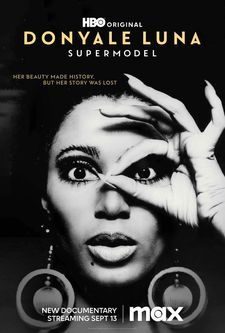 |
| Donyale Luna: Supermodel poster |
NJ: Yes absolutely. I think people like Avedon who tried to push us forward but could only get so far, right? If you look at where we are now - it was the Beyoncé Vogue cover [in 2018] that came out was it two years ago? It was the first Vogue cover that had ever been shot by a Black photographer [Tyler Mitchell].
AKT: Crazy!
NJ: Right! And we’re in the 2020s! Like, give me a break! There are obviously major steps that we need to take to go forward in this industry. There’s still a lot of work that needs to be done. Hopefully Donyale Luna adds to that conversation, like, what else can be done? What else have we not addressed? And it’s going to be constant because look what everything was founded on.
If you were founded on a white standard of beauty and it stays like that for years, that’s a lot that we have to undo. But we constantly have to be aware and that’s not to beat anyone up, that’s not just to have a fight. You constantly have to reevaluate your industry, within the film industry, any industry you’re in. These conversations need to continue to be had. We just have to be aware and do better.
AKT: Do you have another project upcoming?
NJ: I’m developing two things but I have a film that will be coming out that’s at the New Orleans Film Festival in November. Very different film. It’s about a woman who was given a triple life drug sentence in the Nineties but her sentence was commuted by President Obama in 2016. She is from New Orleans, my home town, and she’s been home since then. And she has done tremendous things to change her life and the lives of other women who are in prison. That’ll be out late 2023. It’s a busy 2023 for me.
AKT: I wish you lots of energy - thank you for this! Stay cool in the heat!
NJ: You too, thank you!
Donyale Luna: Supermodel an HBO Original is now streaming in the US on MAX.






















